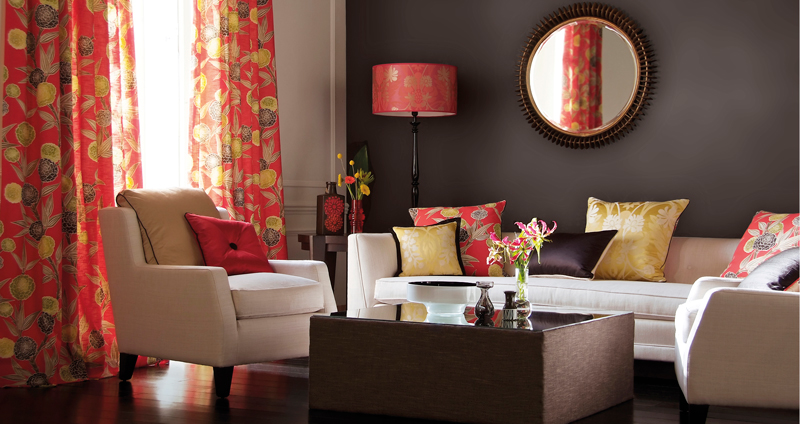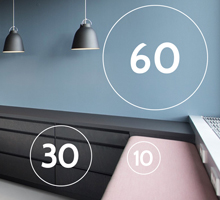Helpful Color Tips
A few go-to design tips will help you use color to set the tone for any room.But how do you create a palette that works in your space while reflecting your personality? How much is too much?
From creating a stunning accent wall to using color on narrow hallways, we have asked the experienced staff at Diamond Vogel to offer answers to your design questions. Their tips will set you on your way to making a personalized space that works.
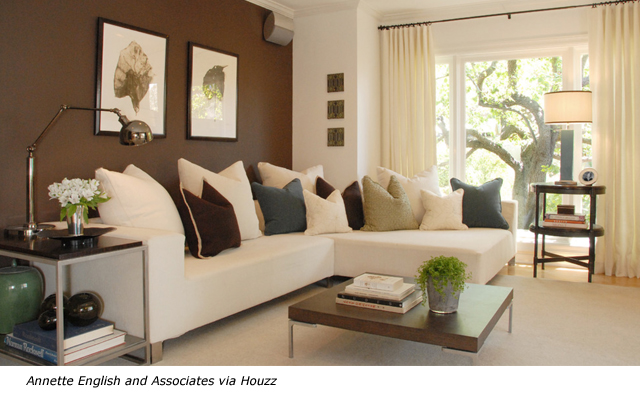
Q. How many colors should a room’s design incorporate?
A.Stick to the rule of three. “More than that distracts,” says Matthew S. When creating a color palette for a room, stick with three main colors. Always consider flooring, drapery, and furnishings. “Three is a great number to strive for. This includes your wall colors and your ‘theme’ color, including the furniture and decorations in your room,” says Katie A. of Vadnais Heights, Minnesota.
Q. How much of each color should I use?
A.“My personal choice is almost always three colors: one in major amounts, the second in half that amount and the third for small, interesting places for the eye to land,” says Joann R. of Scottsbluff, Nebraska. “A single color in varying intensities can be very sophisticated, but still needs a touch of another color in at least small areas. Black makes a terrific point of interest in a monochromatic room.”
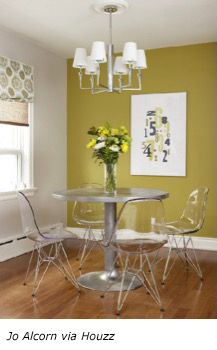
Q. What’s the best way to use an accent wall?
A. “I tell people to paint the wall that they want others to notice first,” says Sue K. of Mankato, Minnesota.
Our paint experts agree – accent walls can affect how big (or small) a room feels. Once you know which wall you want to accent, find color inspiration from what’s already in the room. “Accent walls can be an amazing way to show off a much-loved painting or to pull colors from a fabric or print,” says Joann R. Scottsbluff, Nebraska. “They can also be one way to make a disproportionate room seem more balanced.”
Get creative, says Katie A. of Vadnais Heights, Minnesota. “An accent wall is the focal point. A fireplace, a piece of art or a family portrait is a perfect ‘statement piece’ for an accent wall.”
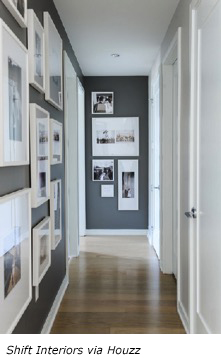 Q. How should I choose paint color for narrow spaces?
Q. How should I choose paint color for narrow spaces?
A. Lighten up! Hallways tend to be narrow and dark, so follow the rule-of-thumb of opting for light paint colors. “Choose colors for the trim that recedes, rather than stands out against wall colors. Light colors will increase the feeling of the space. Keep the same hue, but use different shades,” says Sidney T. Tom G. of Madison, Wisconsin agrees, adding, “If it’s well lit, you can use light to medium color values, but if the space is dark, use light colors only.”
Stick to the same color family in adjoining rooms, just opt for a lighter hue, recommends Kim H. of Lincoln, Nebraska. Another benefit of light wall colors? They can make hallways seem wider, says George E. of Wisconsin. Paint an accent wall at the end of a long hall to make it appear shorter.
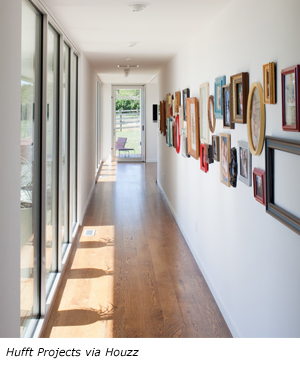 Q. How can I add a pop of color to hallways?
Q. How can I add a pop of color to hallways?
A.Don’t let narrow hallways scare you away from color. While most designers don’t recommend painting a whole hallway wall a bold color, feel free to use favorite colors as accents. Katie A.’s advice? Colored picture frames. “You can paint a wall in a hallway a light color and paint the picture frames a variety of colors to add some life to narrow spaces,” she says.
Q. How can I use color to make a small room seem bigger?
A. “If the room is small with no light from natural sources, it’s important to choose a color that won’t overwhelm your senses,” says Faith C. of Sioux Falls, South Dakota.
Todd S. of Milwaukee, Wisconsin sticks to this simple principle: “The smaller the room, the lighter the color should be.”
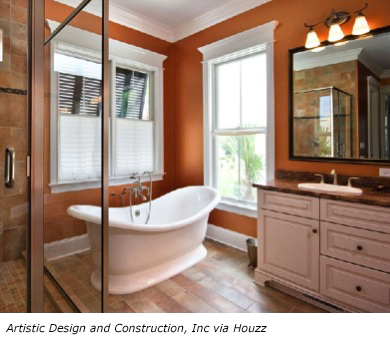
But there are exceptions to every rule. “For example, you may want to avoid jewel tones. However, if the deep color is in warm shades or if the room is cut into by many areas (think mirrors, vanities, showers, cabinets, or wainscoting), then jewel tones can apply as well as deeper, darker warm nature colors,” adds Faith C.
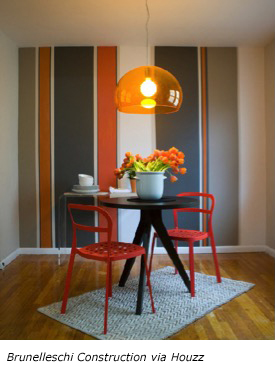
While an entire wall in a bold shade might be overwhelming, consider stripes to elongate a room. “You can use stripes of color to give the illusion of taller ceilings and longer walls. Just because a room is small, don’t eliminate the idea of an accent wall – your eyes pick up rhythm and a break in the rhythm forces your eyes to a focal point,” says Katie A.

